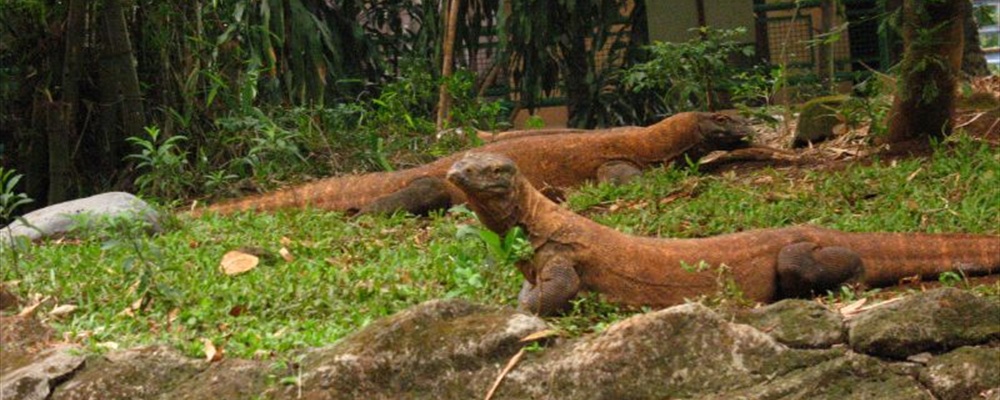
Komodo National Park
( 1 user review )Understand
Komodo National Park lies in the Wallacea Region of Indonesia, identified by WWF and Conservation International as a global conservation priority area, and is located in the center of the Indonesian archipelago, between the islands of Sumbawa and Flores.
Komodo National Park includes three major islands: Komodo, Rinca and Padar, as well as numerous smaller islands creating a total surface area (marine and land) of more than 1,800 km2. As well as being home to the Komodo Dragon, also known as the Komodo Monitor, or Ora (to Indonesians), the park provides refuge for many other notable terrestrial species. Moreover, the Park includes one of the richest marine environments.
History
Komodo National Park was established in 1980 and was declared a World Heritage Site and a Man and Biosphere Reserve by UNESCO in 1986, both indications of the Park's biological importance.
The park was initially established to conserve the unique Komodo Dragon and its habitat, first discovered world in 1910. Since then conservation goals have expanded to protecting its entire biodiversity, both marine and terrestrial.
The majority of the people in and around the Park are fishermen originally from Bima on the island of Sumbawa, and from Manggarai, South Flores, and South Sulawesi. Those from South Sulawesi were originally nomadic and moved from location to location in the region of Sulawesi to make their livelihoods.
Descendents of the original people of Komodo, still live in Komodo, but there are no pure blood people left and their culture and language is slowly being integrated with the recent migrants.
Little is known of the early history of the Komodo islanders. They were subjects of the Sultanate of Bima, although the island’s remoteness from Bima meant its affairs were probably little troubled by the Sultanate other than by occasional demand for tribute.
Climate
Tropical all year round, and both extremely hot and dry (> 40 degrees Celsius) during August and September.
Flora and fauna
The number of terrestrial animal species found in the Park is not high, but the area is important from a conservation perspective as some species are endemic. Many of the mammals are Asiatic in origin. Several of the reptiles and birds are Australian in origin. These include the orange-footed scrubfowl, the lesser sulpher-crested cockatoo and the nosy friarbird.
The most famous of Komodo National Park's animals is the Komodo Dragon (Varanus komodoensis). It is the world's largest living reptile and can reach 3 metres or more in length and weigh over 70kg.
Other animals include the Timor deer, the main prey of the Komodo dragon, wild horses (kuda liar), water buffalo, wild boar (babi liar), long-tailed macaques, palm civets, the endemic Rinca rat (tikus besar Rinca), and fruit bats.
Also beware of the snakes inhabiting the island, including the cobra and Russel’s pit viper, both of which are extremely dangerous.
As far as the marine fauna is concerned, Komodo National Park includes one of the world's richest marine environments. It consists of over 260 species of reef building coral, 70 different species of sponges, crustaceans, cartilaginous (incl. manta ray and sharks) and over a 1,000 different species of bony fishes (over 1,000 species), as well as marine reptiles (incl. sea turtles), and marine mammals (dolphins, whales, and dugongs).
Getting there
The ferry service between the cities of Sape on the eastern tip of Sumbawa and Labuanbajo on Flores drops of passengers on Komodo once or twice every week. There is no port on the island, so passengers are unloaded onto small vessels which ferry's them into the islands only village - note that it's not all departures that has this service, so check beforehand. Bima, a short drive from Sape, has an airstrip with flights to Denpasar.
Travellers coming in from Sape to the west (those travelling overland through Sumbawa and also those arriving at Bima airport) should note that the once-daily ferries from Sape can be suspended indefinitely due to bad weather, so if you want to be sure of your travel arrangements, flying to Labuanbajo is a much safer bet. (If you get stranded at Sape, the best Bima airport will be able to offer is a flight back to Denpasar on Bali.)
Traveling around
On land: On foot, only, as there are neither roads nor motor transport.
On sea: By chartered boat, only, as there are no regular connections.
You may wish to wear long pants, sunglasses and a hat as you walk in the interior.
See
The main reasons to travel to Komodo National Park are the Komodo Dragons, the superb beaches and the unspoilt corals.
Keep in mind that there are also wild pigs, monkeys and horses on Pulau Rinca, one of the two largest islands in the park.
If you return by sea at night, you can also see legions of flying foxes (fruit bats whose wing span may exceed 4 feet) flying in the twilight sky.
At night on the Flores Sea, you also have a magnificent view of the stars.
Things to do
Depending on the time you have available, one or more guided tours on the islands of Rinca and Komodo itself. Please note that it is neither permitted nor advisable to do any tours without local guides, as the Komodo Dragons are dangerous when they attack.
This area is inhabited by more than a thousand different fish species, making it one of the world’s richest marine habitats. You may also swim in the Flores Sea on your incoming or outgoing boat trip to one of the islands. Beware of sharp corals on the sea floor near some of the small islands.
Eat
A limited selection of food is available near the park headquarters on Pulau Rinca, and the prices are not high by Western standards.
Drink
Under no circumstances drink any tap water. The tap water is not potable. Near park headquarters on Pulau Rinca, you may purchase water and soft drinks. If you go trekking into the island's interior be sure to take a large bottle of water with you. You will need it!
Sleep
Lodging
There is a 7 US dollar a night losmen in Labuan Bajo, Flores.
Buy
On Pulau Rinca near the park headquarters you may buy hand carved wooden komodo dragons along with park stickers and park t-shirts. Prices may be cheaper in Labuan Bajo, Flores than on Pulau Rinca.
Safety
The Komodo Dragon has a history of attacking humans. Beware of getting too close, and if you are visiting via the park's office (which you should), ask for a guide and stick close to him. Do not wander off or do anything without his consent. Komodos may approach the guest rest area during annual feeding time, but in this time, find a building (which are usually elevated) and stay clear from the railings. Komodos can and will jump to obtain food if necessary. Park rangers are usually present at these events and will deflect any Komodos trying to get in (which they can do).
You may be given a large pole with a split on the end, forming a "Y" shape. This can be used as a walking pole or for moving things on your path - however, if wild animals threaten, it can be used as a last form of defense (despite being hardly useful against komodos). Overall, try keeping a watchful eye and steer clear of any wildlife.
Komodos are extremely dangerous if close enough. They can run faster than humans (and accelerate very quickly), so best not approach if necessary. Jumping into water (as Komodos are often found near the beach too) doesn't help either, as they can swim faster than humans, can dive, and can also swim against strong currents (in fact, sometimes Komodos are found on neighboring islands, suspected of swimming there). It has recently been discovered that Komodo dragons are the largest known poisonous animal. The previously widely accepted theory that prey die from septicemia caused by toxic bacteria living in the dragon's mouth has now been discredited. The poison is slow acting but anyone bitten will require medical treatment (which is usually not immediately possible ). Furthermore their jaws can mean instant death. It may also charge at its victims. It's tail is equally deadly and may be swung dangerously, knocking victims off their feet.
Younger Komodos may live in trees. While not as dangerous as their parents, they can still jump off suddenly and cause panic. Snakes, monitor lizards, and other animals are also present and may cause minor problems.
Saltwater Crocodiles are not present on Komodo Island but they may be present on the surrounding islands and in the ocean. Any area with estuaries and river mouths should permit extra caution as, although they are technically not present on Komodo, the islands ARE within the species natural range. It was once believed by Indonesian natives that monitor lizards (including the Komodo dragon) were capable of warning humans of a crocodile's presence.
Fees/Permits
You need to buy the appropriate fees and permits at one of the park headquarters when you arrive. Presently there is a conservation fee which is not expensive and which is nice, as it helps to preserve this magnificent park.
Contact & location
1 Review
Add your review
The photos displayed on this page are the property of one of the following authors:
Ingsoc, java tourism, baliartphotography.com
Some photos courtesy of:
 . The photos provided by Flickr are under the copyright of their owners.
. The photos provided by Flickr are under the copyright of their owners.
This travel guide also includes text from Wikitravel articles, all available at  View full credits
View full credits
Ryan Holliday, Tofan Anugrah, Stefan Ertmann and Nick Roux, Billben74, Burmesedays and Tatatabot
This travel guide also includes text from Wikipedia articles, all available at  View full credits
View full credits
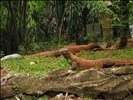
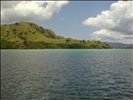
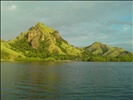
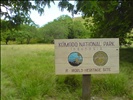




I liked
there is many attractions.. how WONDERFUL !!I disliked
Nothing